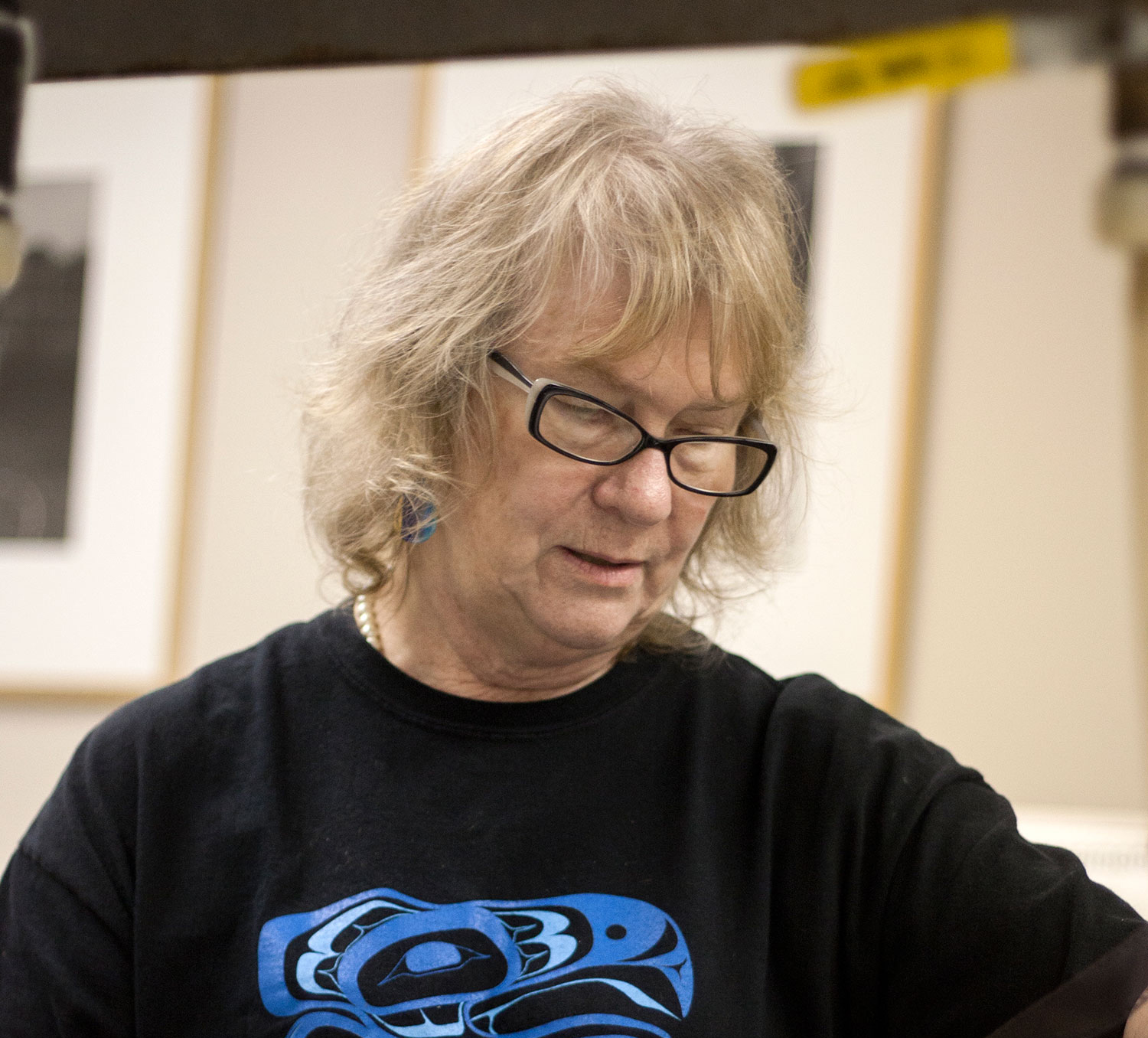By Joshua Knopp/special assignments editor
Part two in a five-part series on winners of the Chancellor’s Award for Exemplary Teaching, an annual recognition of professors who impress and inspire their students.

Carrie Duke/The Collegian
TCC was Patricia Richards’ favorite place to teach when she first started as an adjunct in 1990, and she had a handful of schools to choose from.
She spent time teaching at Texas Woman’s University, the University of North Texas and Mountain View College in Dallas while she was an adjunct for Tarrant County.
“I really enjoyed teaching at all the places, but TCC was my favorite,” she said. “The program that we teach here is so comprehensive. Many of the things that I did here, I took with me to the other places.”
Richards ran a route like this for 18 years, at some points teaching photography at all four schools weekly, before being hired as a full-time teacher at TCC in 2008.
Four years later, she’s won the NE Campus Chancellor’s Award for Exemplary Teaching.
For the past 10 years, Richards has facilitated a study abroad photography program that takes students to, alternatingly, Italy and France or southern Spain. Generally, she fields two trips per year, one in May and one over the summer.
However, this year, she will lead her fourth spring break trip that will take students to Trieste in northwestern Italy and south along the coast to Venice with an optional, two-night layover in Paris at the end of the trip.
Art associate professor Martha Gordon has been on each of Richards’ spring break trips and plans to attend the upcoming one as well. As a painter and drawer, Gordon has found commonality between her media and photography over the trips.
“I teach Design I, and I have for years,” Gordon said. “I see everything through a designer’s eye. Having gone on these trips, I’ve gotten really interested in photography. I think, probably, the commonality is design.”
Having put travel abroad trips together herself, Gordon praised Richards’ organizational abilities.
“She’s completely dedicated to the art form,” Gordon said. “It’s an incredible amount of work that she puts out. She’s the one that just completely sets it up.”
Richards’ office is covered with her photographs, books of galleries that include her work and artifacts from photography history.
“It was considered a miracle in 1835,” she said. “Making visible any object and any scene exactly as it existed was never possible before.”
Two of Richards’ older artifacts are a stereoscope and an original daguerreotype. Daguerreotypes were the first form of photography and involved capturing an image on a sheet of copper that had been treated chemically to make the image stick to it and then treating the copper in different chemicals to make the image come out. The resulting pictures were incredibly delicate and can’t handle sunlight. A daguerreotype is sometimes referred to as a “mirror with a memory” because of its mirror-like sheen.
Stereoscopes represented the first 3-D craze. The devices took various forms, but all involved two images that created an illusion of depth when side by side. Richards said they were used for a kind of vacation.
“The parlor game was a trip somewhere,” she said, explaining that hosts would keep stereoscopic images of far away places and have their guests view them. “Instead of traveling afar, you traveled from your living room.”
Richards said that an exercise she takes each class through is asking them what constitutes a great photograph. The exercise — and the exercise of teaching photography — is something she never tires of because each class comes up with a different answer. This helps her remain excited about photography as an art form.
“The camera works as an extension of your eye,” she said. “The more you look, the more you see. The more you see, the more you look. So, it’s a continuous spiral of great excitement.”
In addition to teaching, she sponsors the TCC Exposure photography club. Larry Hart, the club’s student president, has taken three of Richards’ classes and was struck by her changing method of teaching.
“In the beginning class, she’s more instructive,” he said. “She’s quick in pointing out what works and what doesn’t.”
In her advanced classes, she shifts to allow for more creativity from her students, Hart said.
“If you take advanced people and give them that close attention, you kind of make creativity smaller,” he said.
For Richards, it all comes back to taking pictures.
“There’s nothing as good as a great photograph,” she said. “If you think about it, what would the world be without pictures?”

